I compared a new cheap mini-LED TV to a mid-range model, and here’s why upgrading is more than worth a small price increase
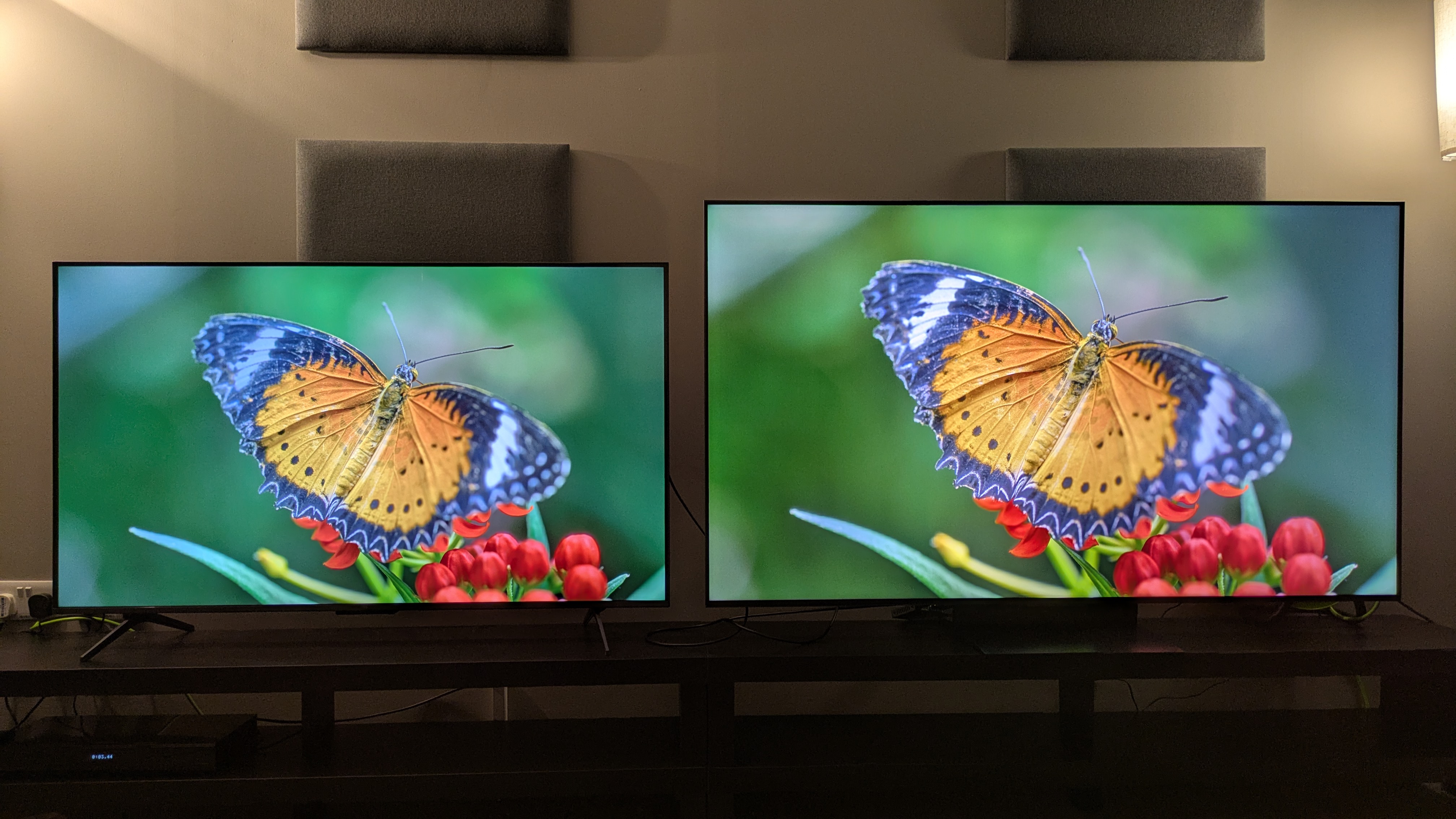
Some TV manufacturers are now offering more models within their full TV lineup, with smaller gaps between them when it comes to features and price, and this can make things confusing for potential TV buyers. Naturally, if an entry-level TV has a similar feature list to a step-up model, it’s the better deal, right? Well, that’s not always the case.
I recently tested two 2025 UK mini-LED TVs from TCL, makers of some of the best TVs. The models are the entry-level C6K and the mid-range C7K, which earned 4 out of 5 stars in my TCL C7K review. When I first saw the 2025 C-series mini-LEDs, the C7K looked to be the sweet spot in terms of value, delivering the best picture quality and features for the price.
As I had both these TVs available, I decided to compare them side-by-side just to see whether the extra cost of the C7K was worth it.
For a price reference, the 55-inch C6K costs £599, and the 55-inch C7K costs £849. I compared the 55-inch C6K with the 65-inch C7K for my testing, however. If you’re in the US, the closest direct models are the TCL QM6K vs the TCL QM7K.
Brightness and color

Both of these TVs use mini-LED backlights, meaning you’re getting higher brightness than with a standard LED TV. But, crucially, there are often brightness differences between entry-level and mid-range mini-LED models.
When I measured the peak brightness of both TVs (on a 10% white HDR window in Filmmaker Mode), the C6K hit 705 nits, while the C7K hit 1,790 nits – a significant difference. But how did this translate into real-world viewing?
The first area of note was color, where the best mini-LED TVs often excel. Watching a 4K Blu-ray of Wicked, with both TVs set to Dolby Vision Dark (which I found to be a more accurate picture preset than Dolby Vision IQ), the benefit of the C7K’s extra brightness hit was apparent.
Sign up for breaking news, reviews, opinion, top tech deals, and more.
In the Wizard & I scene, the green of Elphaba’s skin, pink flowers, blue wall inlays and even the beige walls looked much punchier and more vibrant on the C7K. The C6K didn’t look bad, but it also didn’t have the same level of definition I expect to see in a movie like Wicked, with the C7K adding more color depth.
Even in the climax of the scene where Elphaba runs across a wheat field, the yellow of the field and the sun were more impactful on the C7K. This showed that peak brightness, which is typically higher in more premium mini-LED TVs compared to entry-level models, is a crucial factor for delivering more vivid colors.
Contrast and black levels
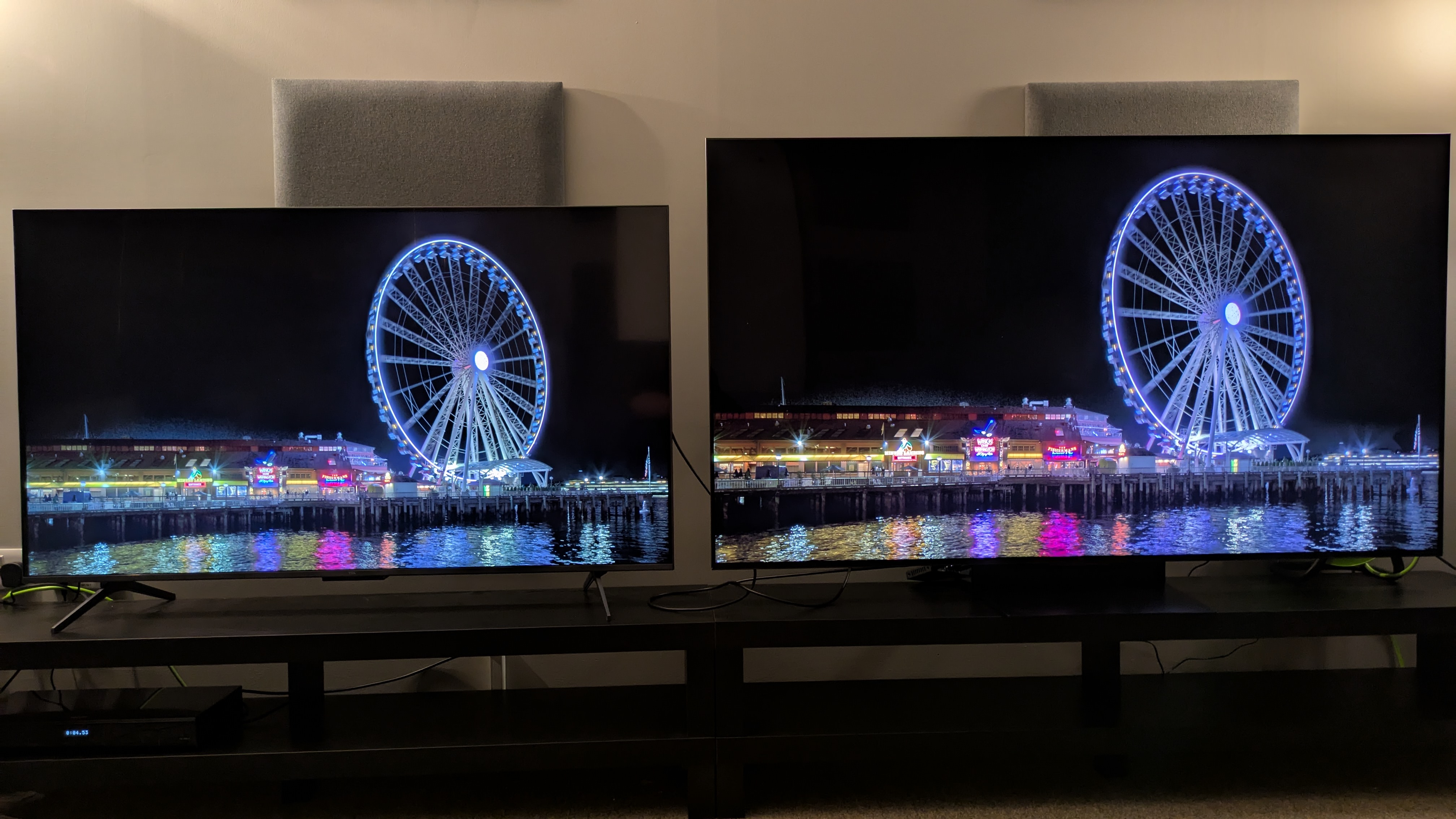
TVs with a backlight, such as mini-LED models, use local dimming to enhance the contrast between light and dark areas on screen. The more local dimming zones a TV has, the more precisely it can dim and brighten sections of the screen based on what’s being shown.
The 55-inch C6K has 180 local dimming zones compared to the 65-inch C7K’s 1,008 local dimming zones. Screen size does have an impact on the number of local dimming zones in a TV, but the C7K’s 55-inch model still has 720 zones, so there can be a significant difference even in same-sized models.
Watching a 4K Blu-ray of Nosferatu, again in Dolby Vision Dark, scenes with extreme contrast, such as a blackened room lit only by a torch, fireplace, or the Moon, looked richer and more accurate on the C7K. Light areas were brighter and the black tones were deeper, creating a much more dynamic and textured image.
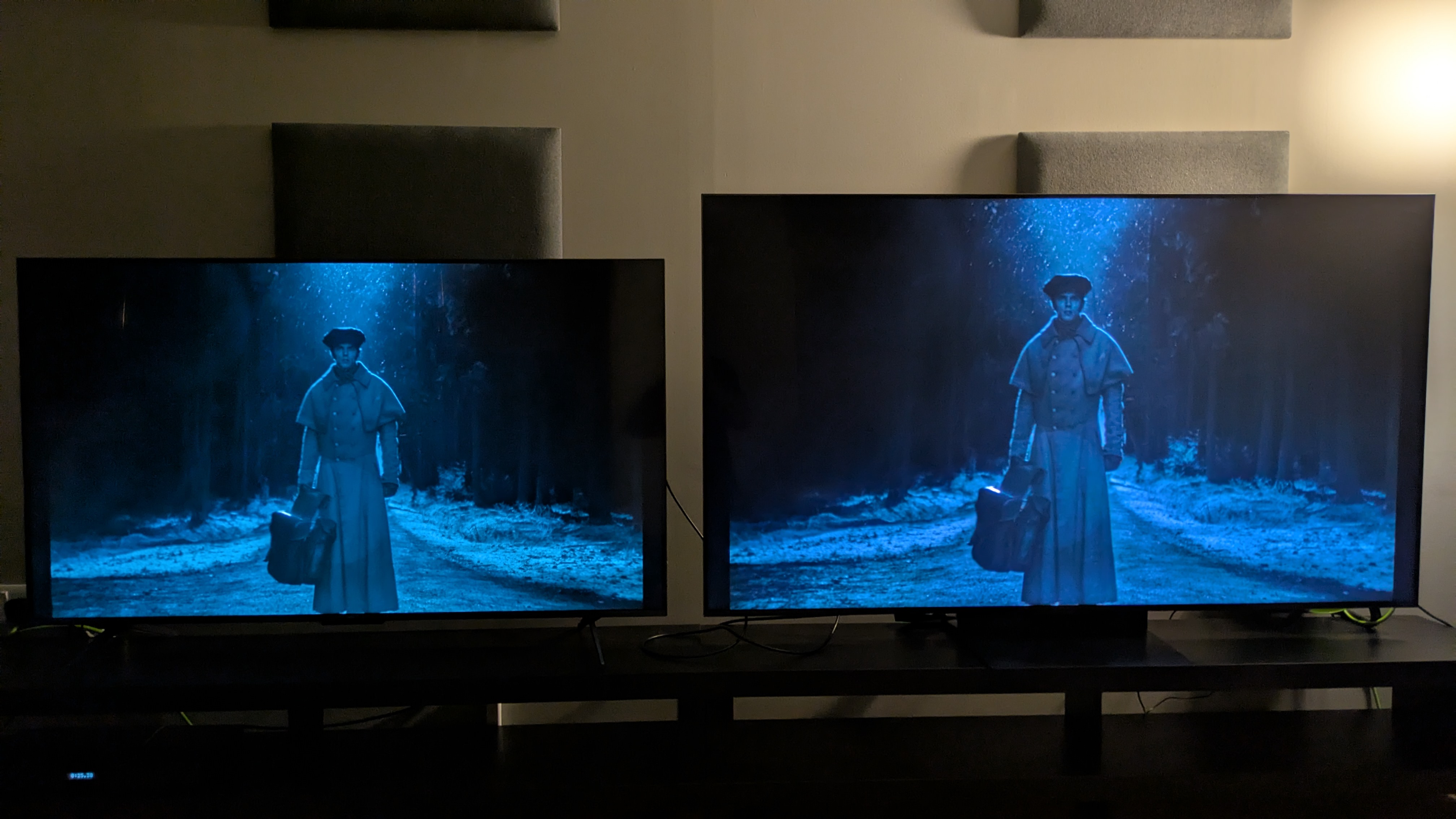
The same was true in The Batman, with the flashbulbs of cameras and wall-lamps better contrasting with the dark surroundings on the C7K. Even smaller details, such as light reflected off Batman’s cape, showed stronger contrast, with a greater difference between the light and dark tones.
The C7K's higher number of local dimming zones also allowed it to show better shadow detail. In Nosferatu, as Hutler walks towards the carriage to Count Orlock’s at night, the C7K showed more of his face in the darkness, whereas the C6K crushed that level of detail.
Black and white – and shades of gray
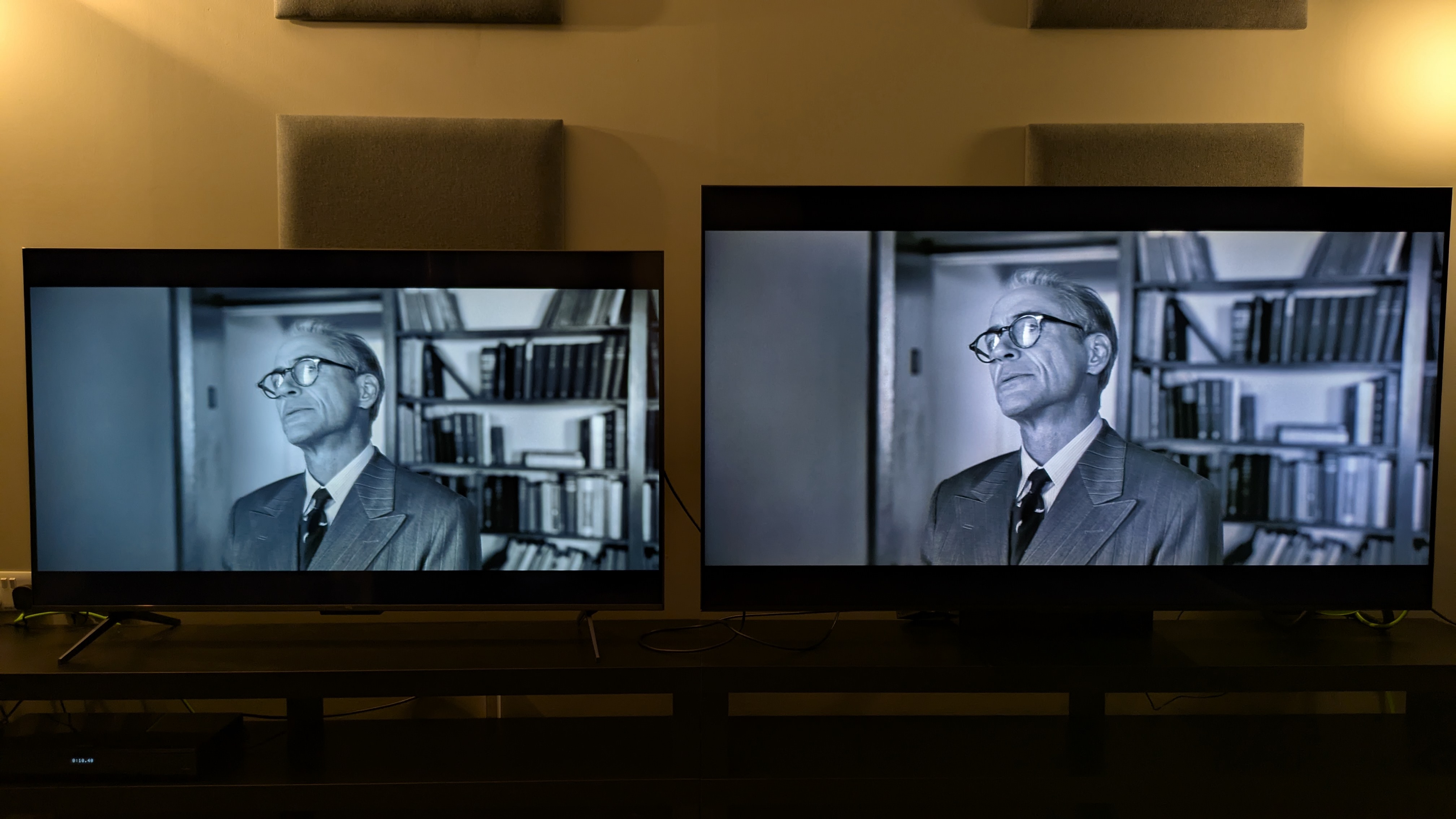
Things got even more interesting when viewing black and white movies. Watching the black and white scenes from Oppenheimer, the C7K still showed greater contrast between deep blacks and white highlights, and had a wider range of gray tones in between.
However, I noted that the C6K had better screen uniformity (the ability to evenly display the same color across larger areas of the screen) compared to the C7K. This was an issue I’d noted as an issue in my C7K review, and it made me prefer the C6K when watching black and white content.
Conclusion
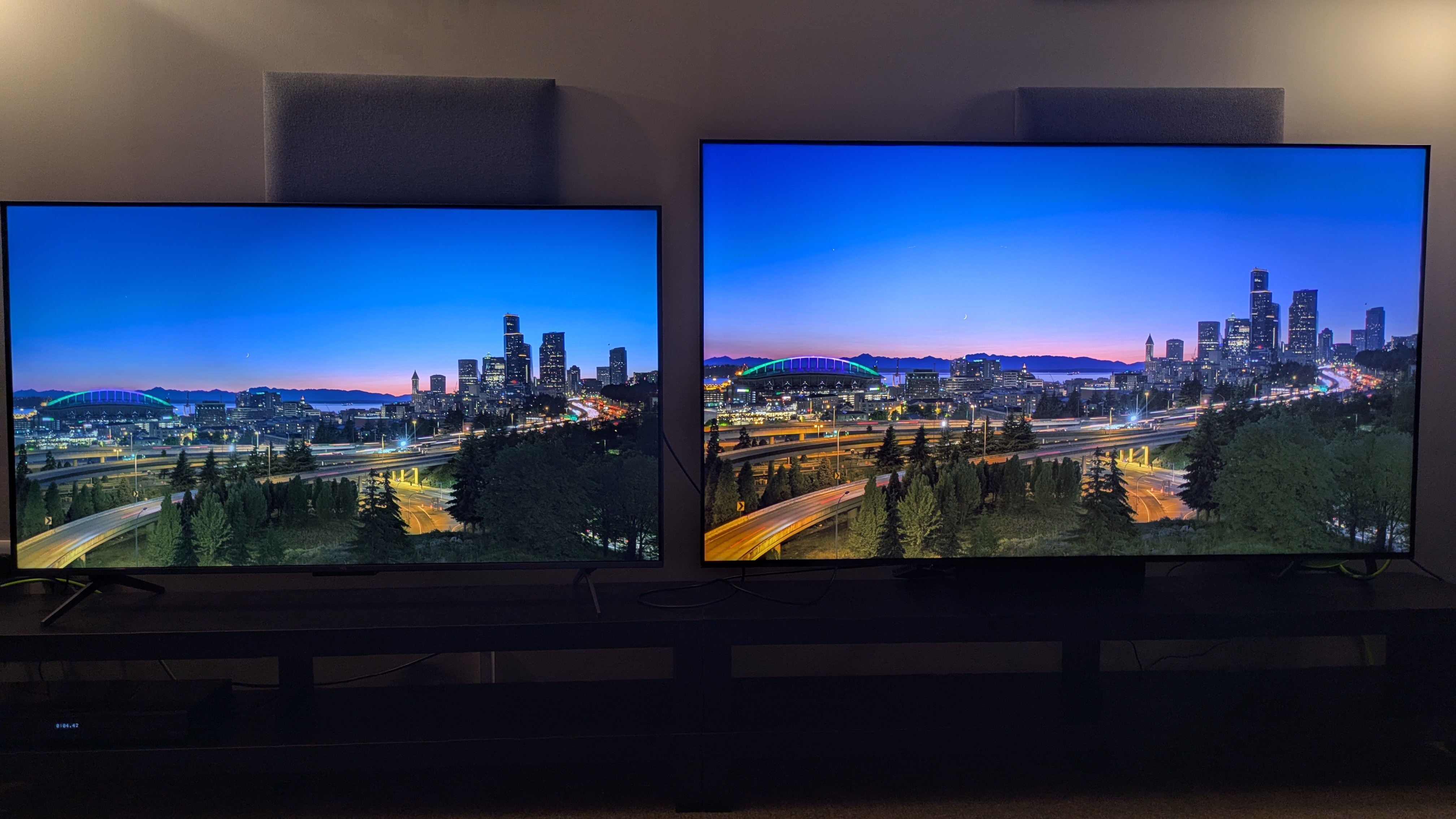
To sum up, comparing these two TVs side-by-side proved that it does pay to pay more. Yes, the C6K may have had the upper hand with black and white images, but the C7K outmatched it in color, contrast, black levels and also detail, with the C6K taking on a softer look in a side-by-side test.
That’s not to say the C6K is a bad TV. For its price, it did a solid job with every movie I threw at it, and it was a perfectly fine TV for casual viewing. But this is one example where, given the small £250 gap in price of the respective 55-inch models, it’s worth investing in the more premium option.
You might also like

James is the TV Hardware Staff Writer at TechRadar. Before joining the team, he worked at a major UK based AV retailer selling TV and audio equipment, where he was either telling customers the difference between OLED and QLED or being wowed by watching a PS5 run on the LG 65G2. When not writing about the latest TV tech, James can be found gaming, reading, watching rugby or coming up with another idea for a novel.
You must confirm your public display name before commenting
Please logout and then login again, you will then be prompted to enter your display name.